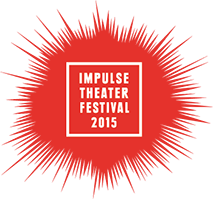
Gesellschaftsspiele
Theatre is the only art whose sole subject is man in his relation
with others… This is why theatre is political art par excellence.
Hannah Arendt
What is the essence of theater? With its contents it does not solely mirror, criticize, and challenge society. Already its particular form is always an expression of its time. When conventional, it confirms its time and challenges it, when progressive: The Greek polis gathered in the Theater of Dionysus to debate their values. During the baroque period the plays were entirely directed towards the absolutistic monarch. And it was not by chance that the awakening of the European bourgeoisie was accompanied by the emergence of the bourgeois theater as an aesthetic and also practical, cultural-political and institutional phenomenon.
Especially the avant-gardes of the twentieth century considered theater as a tool to change society and not only to reflect or, in the best case, challenge it. Brecht wished for theater to be a moral institution of the class struggle, with no distinction between spectator and actor. In contrast, Artaud imagined the dissolution of this border as a subversive intoxication.
Even if these structural similarities between politics and theater often remain more radical and striking on paper than in their execution, the most consequential performance artists have always understood theater as a medium in which social and political practices can be tried out; in which societies in all their – actual or imagined – varieties are acted, performed, expanded, verified, or even invented.
It is therefore not surprising that the recent political crisis of representation prompted an artistic crisis of the model of bourgeois theater which still dominates the stages. “How are we represented? How do we represent or present ourselves?” – independent theater is forcefully engaged in these questions, incorporating the “social turn”. Mere representation has been replaced by focusing on the development of real situations. At the same time, the past years have established that presence does not exclude representation; it makes it useful and verifiable in another way.
The paradigm of the collective, which has become increasingly important to independent theater over the past years, has been expanded to include the audience. Thus creating a space in which possible social practices can implicitly or explicitly be tried out. The spectrum ranges from “Experts of the Everyday” to the theater as court, game show, space of discourse, or ambient theater. It includes closed totalitarian micro-systems as well as direct, often radical interventions in society. Even the pervasive surge of “institutes” and “organization” as metaphors or real structures within independent theater point to the fact that the performance-based art is progressively seen as one possible way to analyze Social Procedure. Social situations and processes have been initiated that require their own, partially even new artistic criteria.
It is not random that spectators can no longer escape to any outside and have to develop their critical position from within. The collectively produced situation is also a counterproposal to The Society of the Spectacle, which reduces us to the role of the consuming spectator or at the very best to a bit-part player.
The focus on the relationship between artists and spectators is not directed at a simply conceived, hasty participatory theater, which would merely replace one kind of paternalism with another. Presumed participation is a symptom of the capitalist system, which does not collapse due to its contradictions, but instead integrates them. This equals the nightmare of a participation which one cannot escape and which therefore impedes real participation: joining in, playing and going along. Actual participation – in politics as in art – lives off its radical potential. Taking part is no pacifying placebo. It can be empowering, but also difficult or even downright unpleasant, such as in Christoph Schlingensief’s early performances or in Artur Zmijeweki’s or Santiago Sierra’s unsettling experiments.
On the other hand, taking part and participating in theater can by all means take place in classical frontal theater spaces – anytime proscenium stages, black boxes or white cubes are identified as real places. Even they are “site specific,” even they can create a real, temporary community and can examine the function, potential, but also the breaking points of one’s own rituals. Above all, however, taking part is increasingly used in controversial theatrical works that blur the boundaries between art and society, or that very directly intervene in politics.
Impulse 2015 invites independent theater works that not only depict society, but interrogate it or directly intervene in social processes. Thus re-examining the role independent theater can play, not as domesticated, marketable “relational aesthetics”, but as a political and social laboratory of the present. How can theater and performance unfold their fundamental agonistic, provocative potential – a potential that cannot be immediately and easily integrated and that is not bound to conceal social dysfunctionalities, disruptions, and sore spots, but that addresses, displays, and produces them itself. At a time in which the once frowned upon dictum “Whoever is not with us, is against us” is experiencing an unexpected renaissance, also in rather critical circles, it’s about opening up spaces of negotiation and debate, in which contradictions are not only kept alive, but above all can also be articulated.


